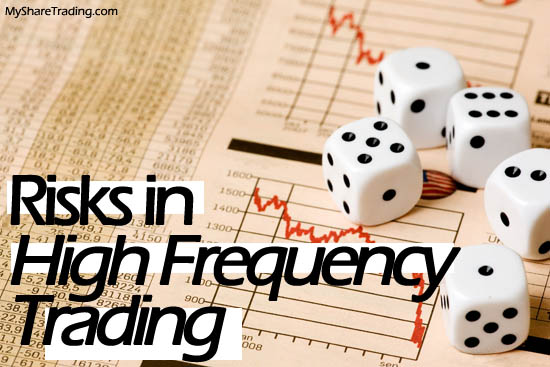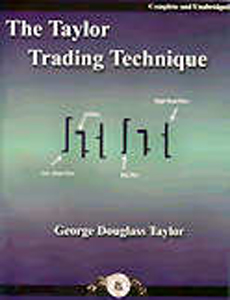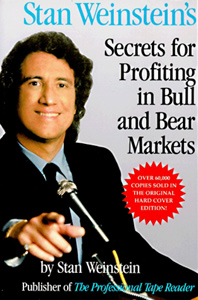The Risks in High Frequency Trading

Further Reading
Recently, the Industry Super Network sent a letter to ASIC (Australian Securities and Investments Commission) concerned about the negative impacts of high frequency trading. The letter was in response to ASIC's Consultation Paper No. 184: Australian market structure: Draft market integrity rules and guidance on automated trading wherein ISN encourages the regulator to carefully explore the "potentially significant risks that HFT presents to market fairness and allocative efficiency, in addition to ASIC's current emphasis on market integrity risks". "ISN recommends that ASIC impose a moratorium on HFT at the exchange level requiring orders that are received to be maintained until exposed to matching, which matching would occur in pulses separated by meaningful periods of time."
High frequency trading has been in the news in the past few years due to its impact on markets when things go awry. The letter identifies that HFT firms rely on structural advantages to profit from the market:
- Co-location of computers with the stockmarket's computers. This enables them to send and receive buy and sell signals quickly.
- Customised and time-advantaged data feeds where the HFT companies would have access to market prices faster and may have access to more privileged information.
- Special telecommunications arrangements: the example given is the special fibre link between New York where all the securities markets are located with Chicago where the derivatives market is located. The fibre saves 1.4 milliseconds compared to the original fibre link. They also have a microwave beam technology available which sends messages faster at 6 milliseconds faster than the original fibre link.
- Flash orders whereby these firms would get a preview of prices before the market. ASX has verified that is does not do this, while Chi-X is not confirmed.
There are three areas of concern identified by ISN:
- Market integrity
- Fairness
- Efficiency
HFT: Market integrity
- Magnified risk to market integrity (integrity in terms of stability and resilience of the trading marketplace) as there is capacity for HFT to flood the market with orders.
- This assumes that the market has robust systems running the market, enough to accommodate the needs of algorithmic trading. On Black Monday 1987, the Dow Jones Industrial Average fell 12.8% when the flood of selling overwhelmed the ticker tape system which gave the current prices of the stocks.
- The Flash Crash of 2010 (May 6, 2010) demonstrated how HFT algorithms can threaten market integrity.
- The SEC and CFTC joint report on the flash crash: "The report found that HFT, particularly under stressed market conditions, can erode liquidity and contribute to a breakdown in orderly markets."
- Furthermore: "Many market participants employ their own versions of a trading pause – either generally or in particular products – based on different combinations of market signals. While the withdrawal of a single participant may not significantly impact the entire market, a liquidity crisis can develop if many market participants withdraw at the same time. This, in turn, can lead to the breakdown of a fair and orderly price-discovery process."
- Read more about the 2010 Flash Crash.
Algorithmic Trading: Market Fairness
- HFT has access to structural advantages, which are exploited for profit.
- HTF uses low latency (measure of time delay experienced in a system) algorithmic trading to profit from trades.
- A New York Times article entitled " Stock Traders Find Speed Pays, in Milliseconds" from July 2009 stated that HFT can operate "so fast they can outsmart or outrun other investors, humans and computers alike." In 2008, the article reports the HFT generated an estimated $21 billion in profits.
- ISN identifies three possible problems relating to fairness of these high frequency trading algo's:
- ... the possibility that it maybe simply a transfer of money from traditional positional investors to the HFT firms.
- ... the "quotation practices of HFT firms are inconsistent with basic principles of fair and equitable trade."
- ... their behaviour could engage in " manipulative behaviour that is difficult to detect."
HFT: Market Efficiency
- The increase of HFT use in the markets will transform the markets from a market based on fundamental information to one based on technical price data.
- IOSCO: " ... high volume trading algorithms might move the market prices away from fundamental values in the short-term and impair the price discovery process that takes place on public and transparent markets."
The Full ISN letter to ASIC – on Australian market structure can be found here.
- How to Trade Forex and Gold Options
- How to Trade the Gold Price and Profit!
- Forex Trading the EUR/USD Pair € EURO and $ US Dollar
- How to Trade Stock Market Indices S&P500
- How to Trade Crude Oil
- Forex Trading Psychology
- What Are Broker Recommendations?
- Free Tickets to Trading & Investing Seminar & Expo ($18) Brisbane 2013
- Stock Calc App
- All About Warrants
- Introduction to Exchange Traded Funds
- Introduction to Exchange Traded Funds: Features
- Introduction to Exchange Traded Funds: Domestic ETFs
- Introduction to Exchange Traded Funds: International ETFs
- Exchange Traded Commodities
- Australian Stock Scan
- Australian Online Share Trading
- List of Trading Books
- Interesting Thoughts about the Australian Dollar
- What's the Meaning of Hawkish?
- Do You Know How To Use the P/E Ratio
- Trading, Religion and Politics - Do They Have Anything in Common?
- Shares that are Volatile that Double and Half in the Short Term
- Telstra (TLS) T3
- Margin Call by E-mail
- The Cost of Holding a Position
- Lack of Disclosure: Compensation from ASX Listed Company
- Unrealistic Returns and Benchmarks
- CMC Markets Down
- Quality versus Quantity Forex Trading
- Woolworths 1H Sales $30.7bn up 3.2%
Date added 31-01-2013 - ASIC Fines CommBank's CommSec
Date added 25-09-2012 - Industry Super Network Calls to Ban High Frequency Trading (HFT)
Date added 22-09-2012 - NAB Launches Online Share Trading Platform
Date added 19-09-2012 - Reserve Bank of Australia Says 23 Countries Holding AUD
Date added 18-09-2012 - Australia Post Digital Mailbox
Date added 10-09-2012 - Winners and Losers of Trading for Week 2
Date added 16-01-2012 - 2012's First Week of the Best and Worst Traded Stocks
Date added 09-01-2012 - 2011's Last Best and Worst Traded Stocks
Date added 05-01-2012 - Best and Worst Pre-Christmas Traded Stocks
Date added 30-12-2011 - Trading Winners and Losers for Dec. 12-16
Date added 19-12-2011 - Best and Worst Traded Stocks for Dec. 5-9
Date added 13-12-2011 - Top 3 Best and Worst Traded Stocks
Date added 05-12-2011 - ASX Glitch Trading Halt
Date added 27-10-2011 - Worst Trade Stocks (and the Best)
Date added 06-08-2011
Top 150 Public Companies Listed on the Australian Stockmarket as at 29/05/2009
- BHP Billiton
- Westpac Banking Corporation (WBC)
- Commonwealth Bank of Australia (CBA)
- National Australia Bank (NAB)
- Telstra (TLS)
- ANZ
- News Corporation (NWS)
- Woolworths Limited(WOW)
- Woodside Petroleum Limited (WPL)
- Rio Tinto
- Westfield Group (WDC)
- Westfarmers Limited (WES)
- QBE Insurance
- CSL
- Newcrest Mining Limited (NCM)
- Origin Energy Limited (ORG)
- Santos Limited (STO)
- AMP Limited (AMP)
- Macquarie Group (MQG)
- Foster’s Group Limited (FGL)




